 Creepy
Creepy  Creepy
Creepy  Movies and TV
Movies and TV 10 Movies That Get Elite Jobs Right, According to Experts
 Weird Stuff
Weird Stuff 10 Times Real Laws Were Based on Bizarre Hypotheticals
 Animals
Animals 10 Inspiring Tales of Horses Being Human
 Mysteries
Mysteries Top 10 Haunting Facts About the Ghost Ship MV Alta
 History
History 10 Surprising Stories About the Texas Rangers
 Humans
Humans 10 Philosophers Who Were Driven Mad by Their Own Theories
 Miscellaneous
Miscellaneous 10 Video-Game-Worthy Weapons and Armors from History
 Weird Stuff
Weird Stuff 10 Psychics Who Accurately Predicted Wartime Events
 The Arts
The Arts 10 Pieces of Art Inspired by a Broken Heart
 Creepy
Creepy 10 Death Superstitions That Will Give You the Creeps
 Movies and TV
Movies and TV 10 Movies That Get Elite Jobs Right, According to Experts
 Weird Stuff
Weird Stuff 10 Times Real Laws Were Based on Bizarre Hypotheticals
Who's Behind Listverse?

Jamie Frater
Head Editor
Jamie founded Listverse due to an insatiable desire to share fascinating, obscure, and bizarre facts. He has been a guest speaker on numerous national radio and television stations and is a five time published author.
More About Us Animals
Animals 10 Inspiring Tales of Horses Being Human
 Mysteries
Mysteries Top 10 Haunting Facts About the Ghost Ship MV Alta
 History
History 10 Surprising Stories About the Texas Rangers
 Humans
Humans 10 Philosophers Who Were Driven Mad by Their Own Theories
 Miscellaneous
Miscellaneous 10 Video-Game-Worthy Weapons and Armors from History
 Weird Stuff
Weird Stuff 10 Psychics Who Accurately Predicted Wartime Events
 The Arts
The Arts 10 Pieces of Art Inspired by a Broken Heart
10 Criminal Facts About The History Of Alcatraz
Today, Alcatraz is one of San Francisco’s most notable landmarks. It gained its infamy from movies and TV shows keen to exploit the history of the prison and its notorious “residents.” Understandably, this kind of place has a few stories to tell.
10 The Alcatraz Citadel
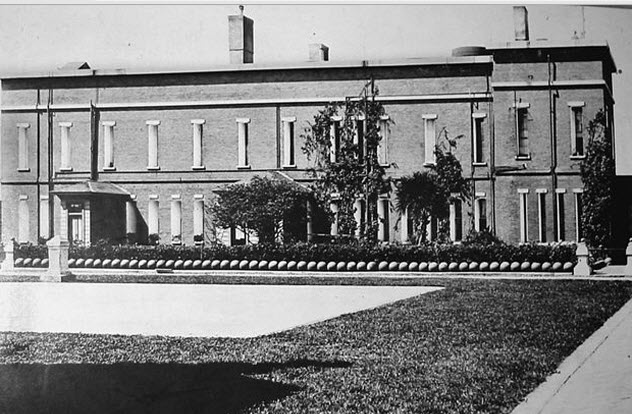
Most people think of the history of Alcatraz as the history of the prison, but the two are not exactly the same. Before the penitentiary even existed, the island hosted a military fort known as “Alcatraz Citadel.” Back in 1847, the US Army realized the island had strategic and military value as it could guard against attacks coming into the San Francisco Bay. Around the same time, the California Gold Rush caused traffic coming into San Francisco to skyrocket, so a military outpost seemed like a good idea.
In 1858, Fort Alcatraz was finished. It was armed with a host of long-range cannons capable of firing almost 3,200 kilograms (7,000 lb) of iron in a single barrage, topped off by four 16,300-kilogram (36,000 lb), 15-inch Rodman guns, capable of taking out an enemy ship several miles away with a single blast. All of a sudden, Alcatraz was one of the most heavily fortified military installations in the country.
Due to its high intimidation factor, Alcatraz Citadel didn’t see a lot of action. As soon as the fort was built, Alcatraz also provided disciplinary barracks for soldier-convicts. In the decades that followed, the barracks became the most useful part of the fort, particularly during the US Civil and Spanish-American Wars. Finally, in 1907, the Army removed all of the fort’s artillery and turned it into a military prison.
9 Prison Turns Federal

In 1915, Alcatraz was officially renamed “Pacific Branch, US Disciplinary Barracks” to reflect its status as a military prison where soldiers would either serve out sentences or come in for retraining. This lasted until 1933 when the US Department of Justice turned it into a federal prison.
In 1934, Alcatraz was reopened as a maximum-security federal prison located on a remote island surrounded by freezing waters and powerful currents. Right off the bat, it was clear that “The Rock” wasn’t your average penitentiary. It was fitting for the most violent inmates who posed security risks in other prisons.
It didn’t take long for Alcatraz to welcome one of its most notorious inmates, Al Capone. Ten days after the penitentiary opened, Capone was transferred there from a prison in Atlanta where he had been serving an 11-year sentence for tax evasion. According to reports, Capone’s fame and money had afforded him a luxury lifestyle in Atlanta, something that changed as soon as he arrived in Alcatraz. Anything out of line earned him a trip to solitary confinement.
Capone spent five years in Alcatraz and was released in 1939. By then, he had suffered for years from untreated syphilis and experienced frequent bouts of paralysis and dementia. Capone spent most of his remaining time in and out of hospitals and was diagnosed with the mental age of a 12-year-old. He died of a stroke in 1947.
8 Alcatraz Island Lighthouse
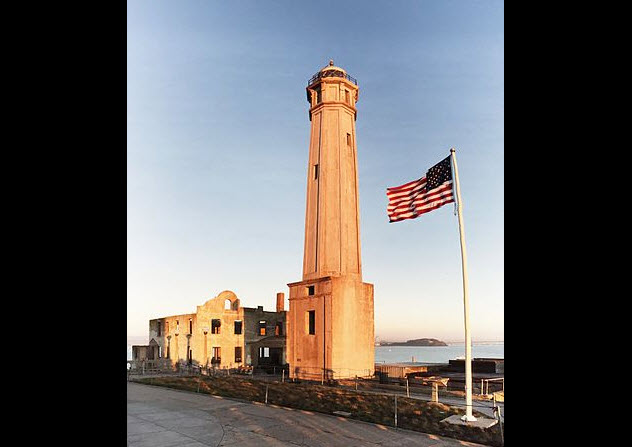
It’s often forgotten that Alcatraz boasts another impressive landmark—the first lighthouse on the Pacific Coast. It went into service on June 1, 1854. Due to the Gold Rush, San Francisco saw a tremendous growth in population and needed a lighthouse to safely guide ships through the bay.
In 1906, the 15-meter (50 ft) lighthouse was badly damaged by an earthquake and deemed unsalvageable. It was replaced in 1909 with a 26-meter (85 ft) lighthouse located at the south end of the island. This lighthouse remained the same until 1963.
At that time, the traditional lenses were replaced with an automatically rotating beacon. The automation coincided with the closing of the penitentiary, making the upgraded lighthouse part of the museum that Alcatraz became. In 1970, a large fire destroyed all of the buildings on the island (except for the prison), including the warden’s home and the keepers’ quarters. The lighthouse was only scorched and remained operational.
7 The Escape Attempts
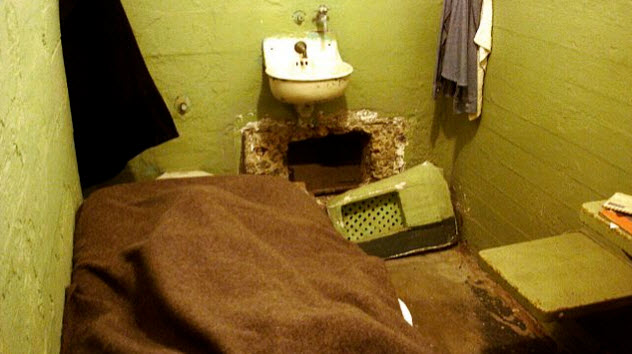
Even though Alcatraz is arguably the most famous prison in the world, it only operated for 29 years. Its notoriety was mainly derived from its reputation as an impenetrable fortress from which nobody could escape. That didn’t stop people from trying, though. During its history, 36 men tried to escape from Alcatraz on 14 different occasions (two of them twice).
Twenty-three of those men were caught, six were shot while trying to escape, and two drowned. We don’t know what happened to the other five, who are listed as missing and presumed dead. Officially, nobody has ever escaped from Alcatraz.
However, rumors persist that some inmates may have made it out alive. We know it’s possible to survive the cold waters surrounding the island. On April 14, 1943, four inmates took two guards hostage and made their escape. Two of them were caught swimming, another one was shot and drowned, and a fourth, Floyd Hamilton, was also presumed drowned initially. However, Hamilton survived his escape attempt and spent the next two days hiding in a nearby sea cave before emerging to turn himself in.
Not all escape attempts were as well planned as that one. The first escape attempt occurred on April 27, 1936, when inmate Joe Bowers simply began scaling the chain-link fence in full view of the guards. When he disobeyed orders to climb down, he was shot and fell to his death.
6 Alcatraz And Birds
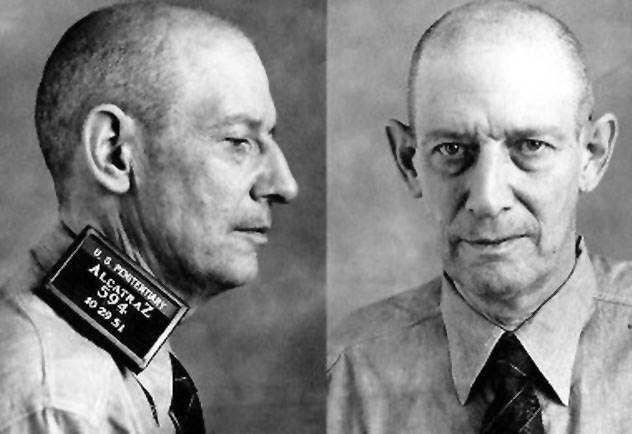
Alcatraz has a longstanding relationship with birds. Everybody knows that one of the most famous residents of the prison was the “Birdman of Alcatraz,” an inmate with a penchant for raising canaries. He gained worldwide fame from the eponymous movie starring Burt Lancaster.
Robert Stroud (pictured above), the real Birdman of Alcatraz, was quite different from his movie counterpart. Stroud was a violent repeat offender who killed two people and tried to kill a third. Furthermore, he never actually had any birds at Alcatraz but rather at Leavenworth before his transfer to Alcatraz.
The name of the island is also inspired by birds. In 1775, when the Spanish explorer Juan Manuel de Ayala was the first European to map San Francisco Bay, he named the island “Alcatraces,” which was eventually anglicized to Alcatraz. Although we’re unsure of the meaning of the word, it’s commonly believed to be an old word for “pelican” or “strange bird.”
Today, the island is overrun with birds. Many colonies of seabirds call Alcatraz home, and parts of the island are closed off to tourists during breeding season to protect nesting birds.
5 Creepy Karpis
Alvin Karpis, nicknamed “Creepy” for his off-putting smile, had the distinction of being the longest-serving inmate at Alcatraz. The prison lasted for 29 years, and Karpis was around for 26 of them, serving a life sentence for kidnapping and robbery.
Karpis was a member of the famed Barker-Karpis Gang, which became better known as Ma Barker’s Gang. The Barker brothers’ mother, Kate, was supposedly the ringleader. To this day, it is still debated whether she took part in any criminal activity, although Ma Barker and her son Fred were gunned down in a shoot-out with the FBI in 1935.
In 1936, Karpis was captured alive after being declared Public Enemy #1 for kidnapping the son of an influential banker. J. Edgar Hoover was present at Karpis’s arrest and personally brought the outlaw in. Karpis was imprisoned at Alcatraz until 1962, when he was transferred to McNeil Island Penitentiary in the state of Washington. There, he befriended a young inmate nicknamed “Little Charlie” and even gave him guitar lessons. Little Charlie would become better known as Charles Manson.
4 Uncle Sam’s Devil’s Island
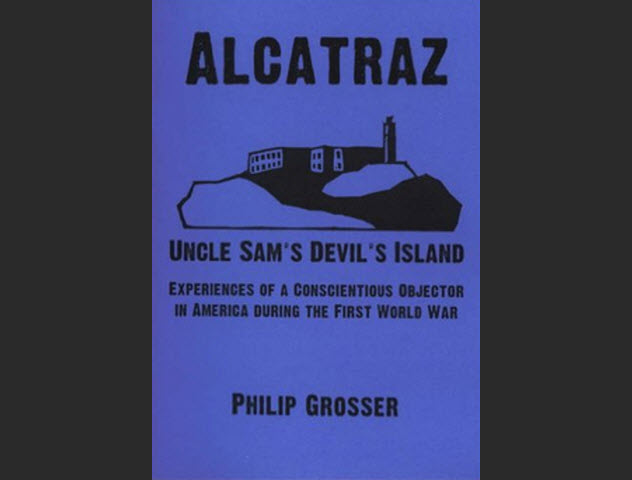
Before becoming a federal penitentiary, Alcatraz had been been a military prison for decades. During the US Civil War, the prison housed many Confederate sympathizers and even San Francisco civilians who celebrated the assassination of Abraham Lincoln. Later, it was used to imprison Native Americans.
Despite its history, Alcatraz wasn’t officially designated a prison until 1907. From that point until it became a federal penitentiary, Alcatraz was commonly known as “Uncle Sam’s Devil’s Island,” a name popularized by conscientious objectors imprisoned there during World War I. Philip Grosser, the most prominent conscientious objector and one of the country’s leading anarchists, spent three years in Alcatraz and wrote a pamphlet entitled Uncle Sam’s Devil’s Island upon his release.
Grosser exposed the cruel tactics used in Alcatraz. According to him, objectors were singled out and tortured by being stuck in cages 58 centimeters (23 in) wide and 30 centimeters (12 in) deep. Depending on the prisoner, a board would sometimes be bolted to the back of the cage to reduce its depth even more. The prisoner was forced to stand upright for eight hours straight then sent to solitary confinement for the remaining 16 hours of that day. The process was repeated each day for months on end. The experience eventually contributed to Grosser’s suicide in 1933.
3 Ghosts Of Alcatraz

Alcatraz once housed some of the most evil people on the planet, so it has its fair share of ghost stories. However, the island’s spooky past extends beyond the federal penitentiary. Even before the Spanish stumbled upon it almost 250 years ago, native people were already wary of the island, claiming that it was inhabited by evil spirits. Sometimes, they would even use the island as a prison, banishing members of their groups there for violating tribal law.
During its time as a penitentiary, guards and prisoners often reported hearing wailings, feeling sudden cold spots, and seeing ghosts of soldiers. Even James Johnston, the prison’s long-serving warden who dismissed the idea of ghosts, admitted to hearing a woman’s cries coming from inside the walls. After it burned down, the warden’s own home became a hot spot for alleged supernatural activity. However, the infamous D-Block, which housed the solitary confinement cells (aka “the Hole”), remains the go-to choice for all of your ghostly needs.
2 The Great Escape Of 1962
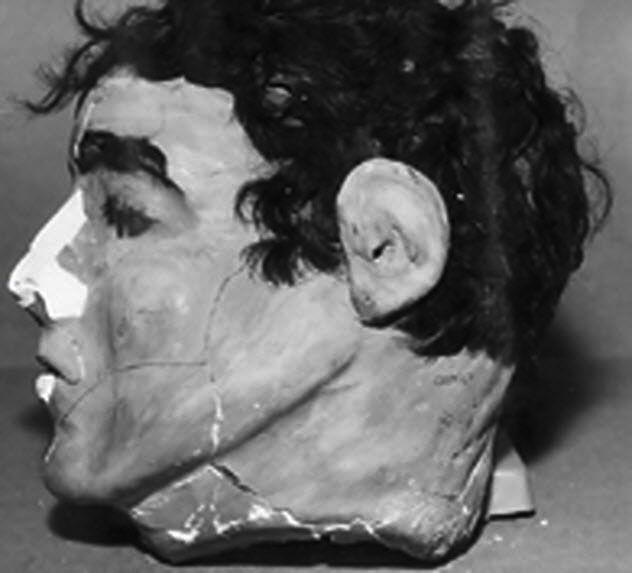
Even though Alcatraz had its fair share of escape attempts, only one was intricate enough to look like it came from a Hollywood movie. In fact, the opposite was true—the real escape was later turned into a movie (blandly called Escape from Alcatraz) starring Clint Eastwood.
The escape on June 11, 1962, involved three men: Frank Morris and brothers Clarence and John Anglin. Using homemade tools, the three of them had drilled into the walls of their cells to reach the vent holes. They also manufactured false wall segments to hide their work and even created dummy heads (as pictured above) out of papier-mache and human hair to place in their beds. After making their way to the roof, the three men climbed down a drainpipe. They headed for the water carrying a makeshift raft and life vests fashioned out of prison-issue raincoats.
The results of this daring escape plan are still debated five decades later. A few weeks after the escape, the body of a man supposedly dressed in prison garb washed ashore but was too damaged to be identified. Officially, Frank Morris and the Anglin brothers drowned, but it wouldn’t be a stretch to think the inmates (at least two of them) escaped from Alcatraz. The idea that it’s impossible to survive the waters in the bay is a myth—several people have been able to swim from the coast to Alcatraz. Fitness buff Jack LaLanne even did it in handcuffs while towing a rowboat.
1 Closing Down The Rock
On March 21, 1963, the prison at Alcatraz closed down. Although some people blame the closure on the high-profile escape attempt by Frank Morris and the Anglin brothers, the decision had actually been made before their escape. In fact, Alcatraz had already begun transferring its inmates to other prisons.
Alcatraz was closed for financial reasons only. It would have cost $3–5 million to renovate the prison and keep it operational, not taking into account the day-to-day costs. Although the prison’s isolation had originally been a main selling point, it also became the prison’s downfall because fresh water, food, and supplies had to be brought in by boat regularly. As a result, Alcatraz cost about three times more to operate than other federal prisons.
Frank Weatherman had the distinction of being the last inmate to walk the corridors of Alcatraz. He had also been the last person to receive an inmate number. Weatherman gave a brief statement to the press, expressing a feeling undoubtedly shared by many before him: “Alcatraz was never no good for nobody.”
Since then, Alcatraz has turned into a popular attraction that gets around a million tourists each year. However, even after the prison officially closed, Alcatraz still had its share of controversies, such as several attempted occupations by Native American protesters.
Radu is a history/science buff with an interest in all things bizarre and obscure. Share the knowledge on Twitter or check out his website.








